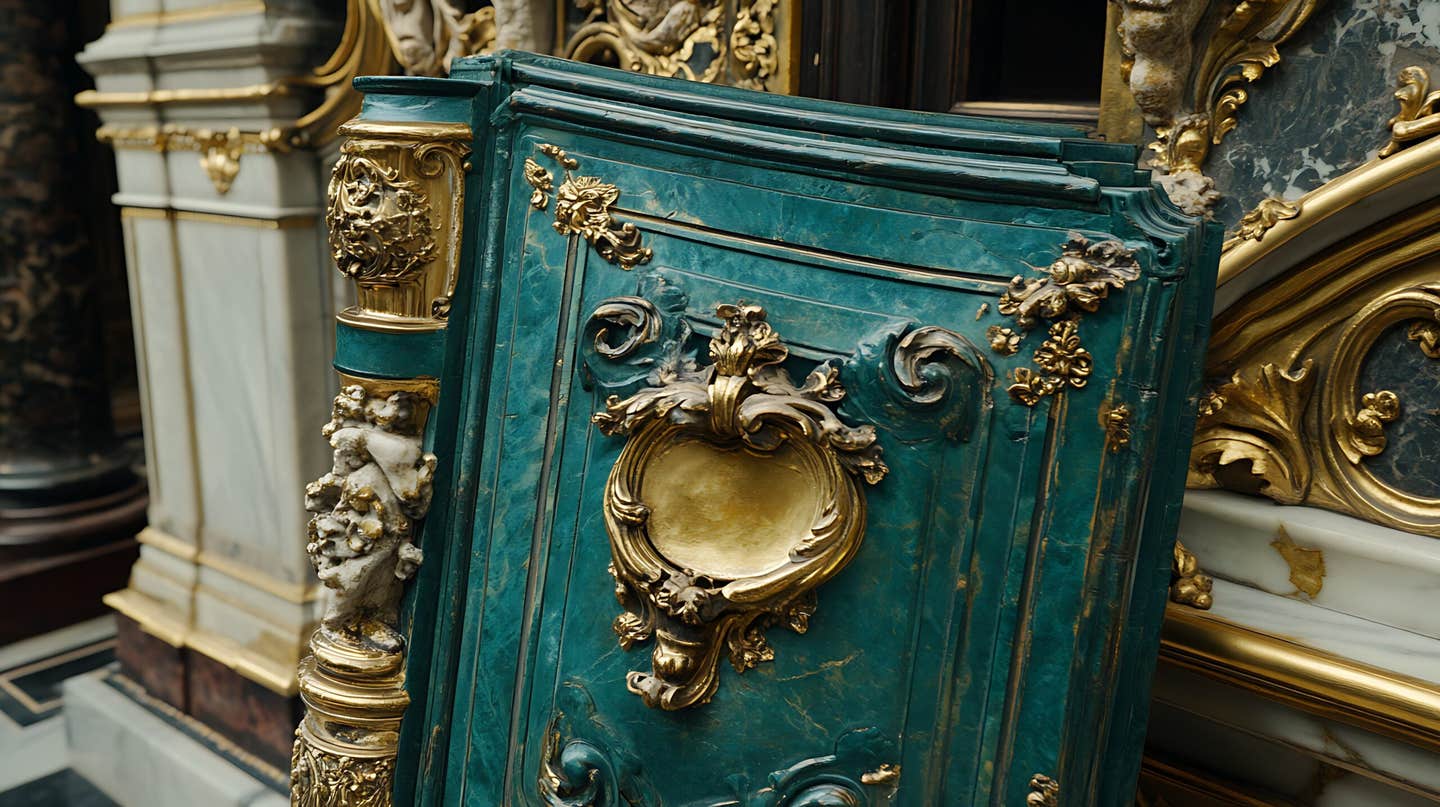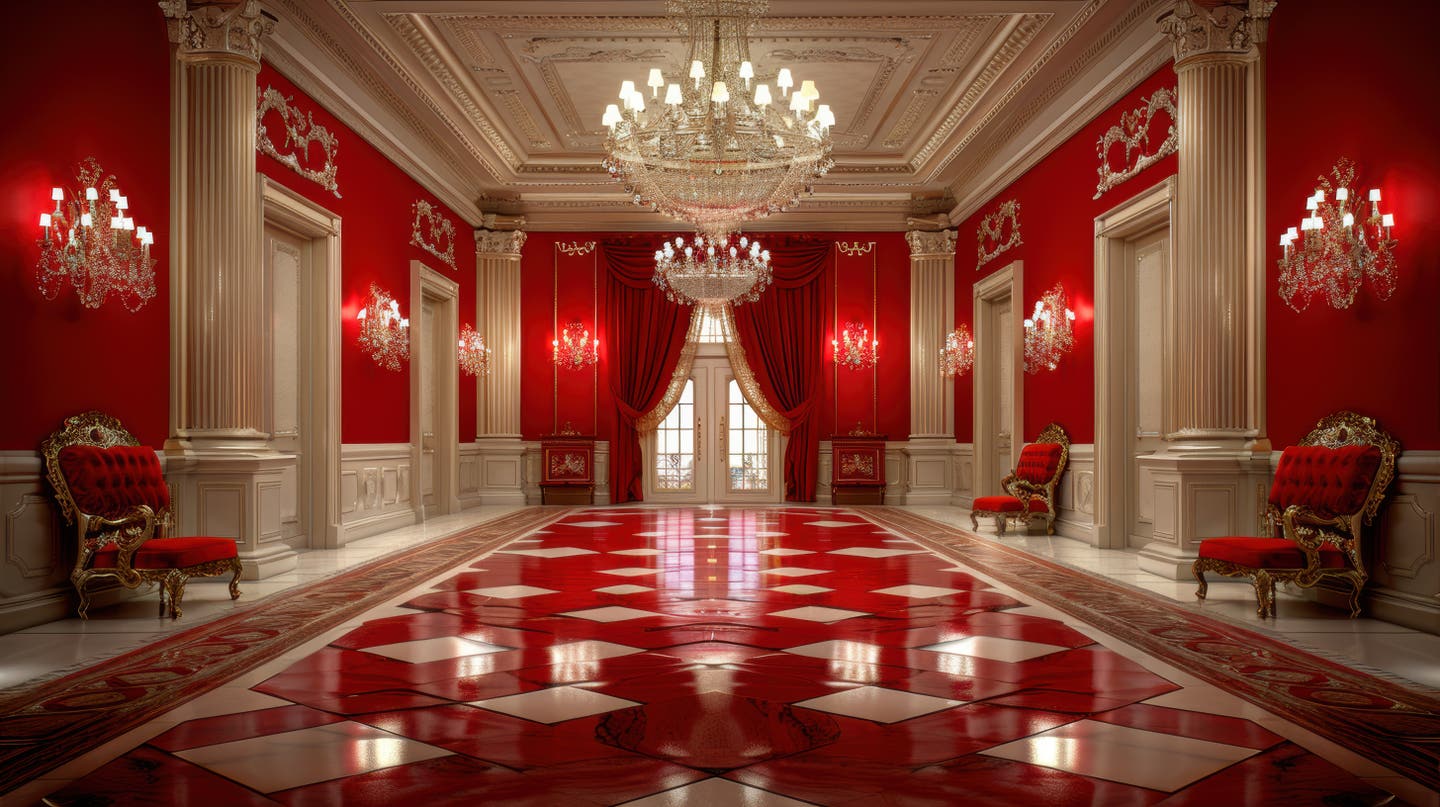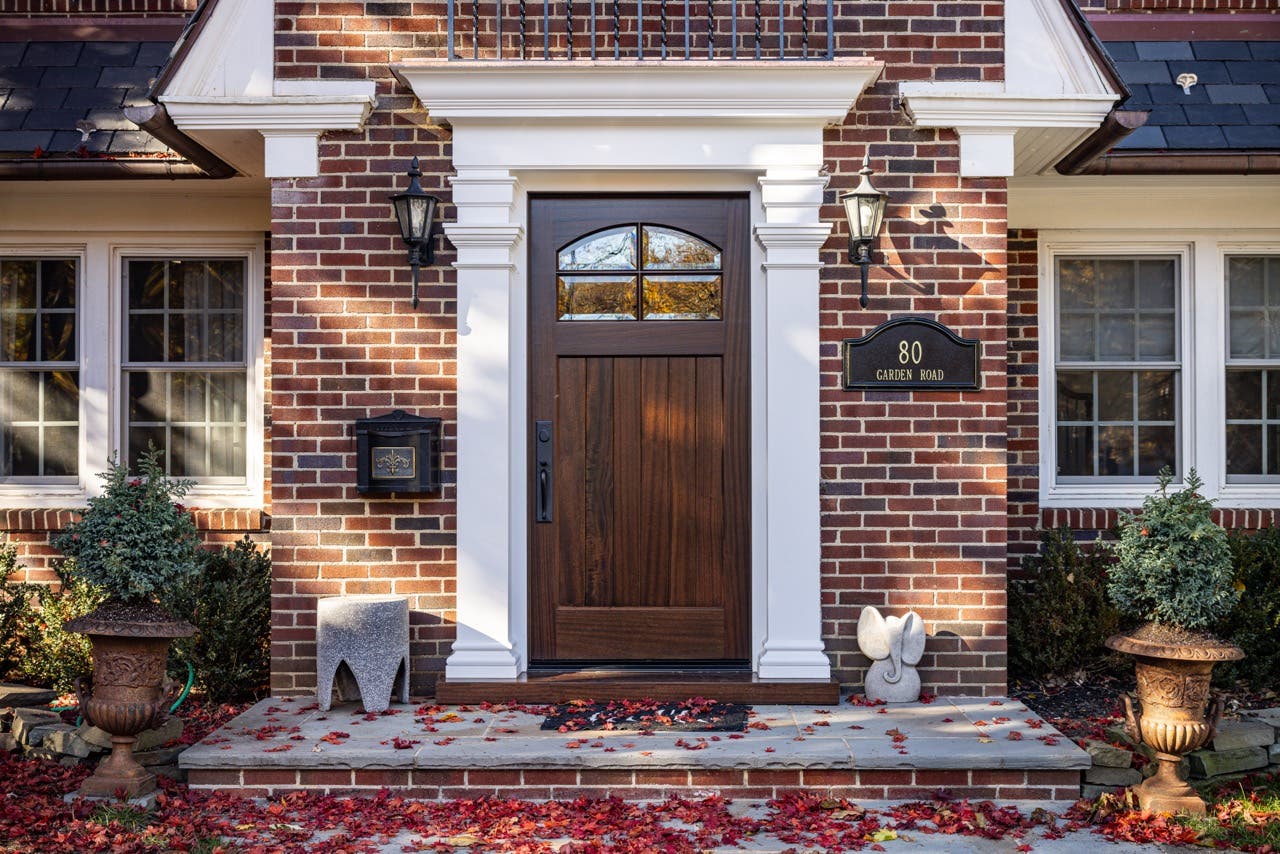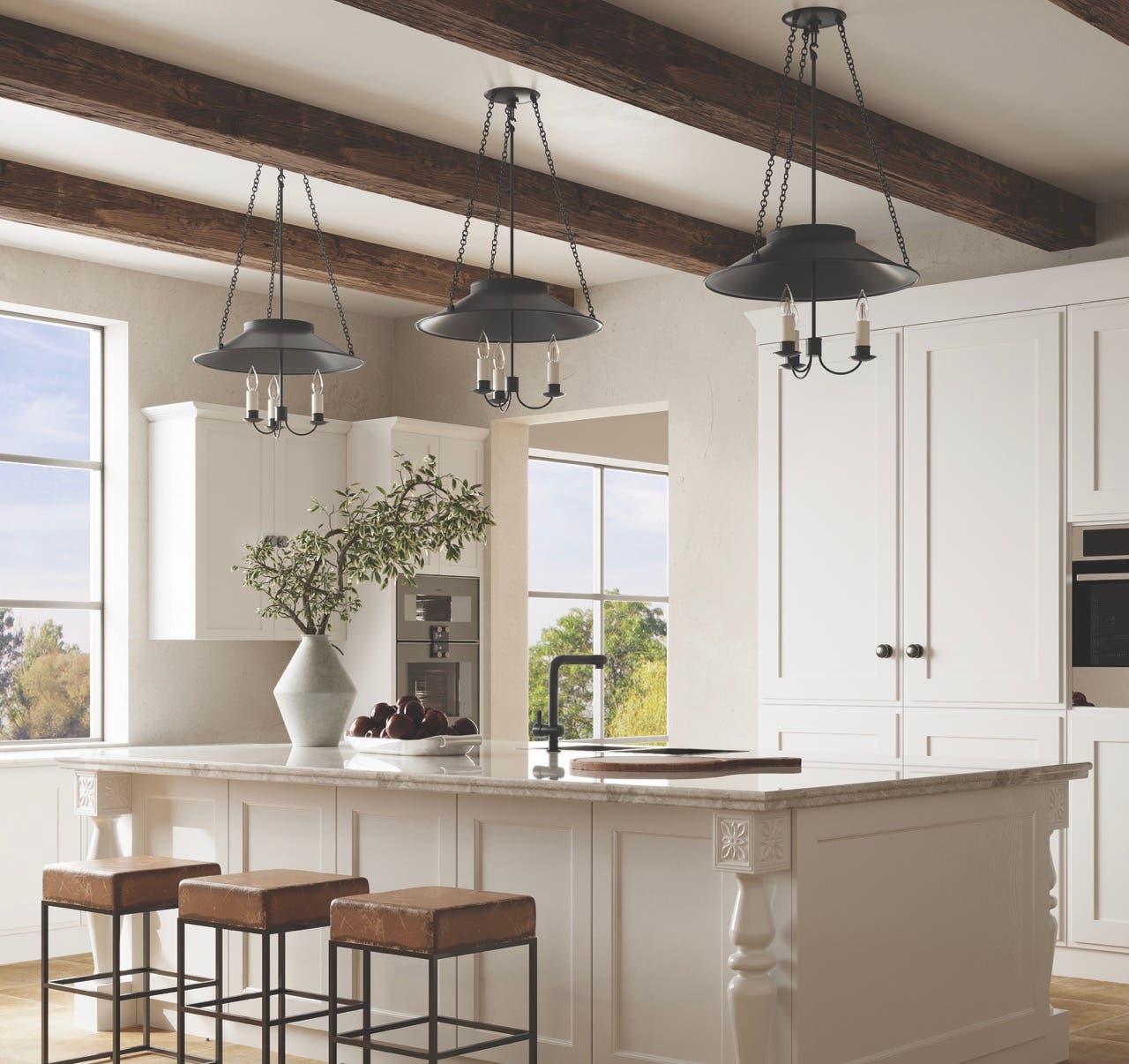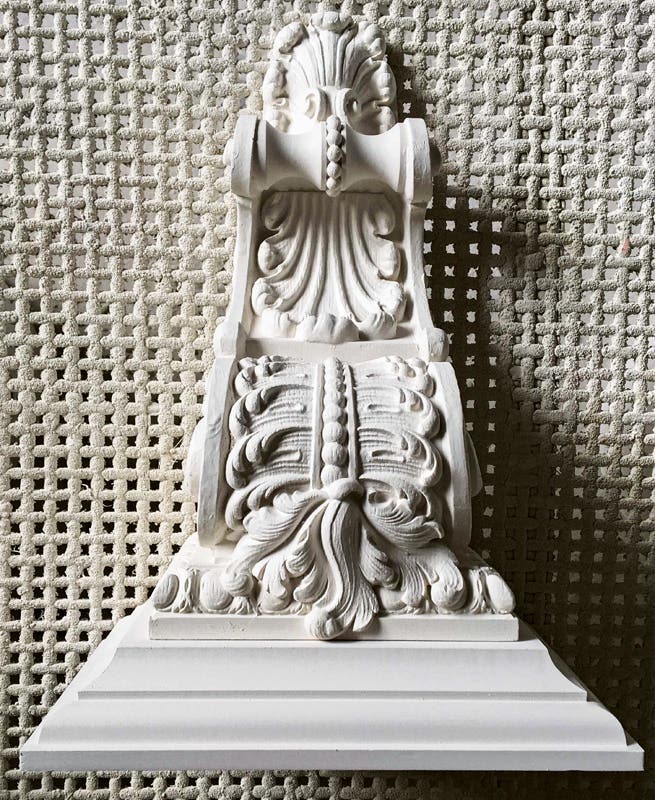
Product Reports
The Benefits of Choosing Plaster Ornaments
“Time crumbles things; everything grows old under the power of Time and is forgotten through the lapse of Time.” — Aristotle
Aristotle could very well be describing the ornamental plaster industry in North America, which is suffering from the lapse of “Time.” When many of today’s plaster manufacturers were first established in the early to mid-1900s, plaster and, to a lesser degree wood, were the materials of choice for creating ornamental mouldings and ornament. Fast forward to today and you find dozens if not hundreds of manufacturers from around the world supplying mouldings and ornament in a variety of materials, but primarily in some type of polyurethane material.
Traditional plaster manufacturers have failed, I would argue, to effectively educate the public over the last half century as why they should choose plaster ornaments over these modern-day alternatives. Through this short article I hope to: 1) Expose the new generation of architects, interior designers and construction professionals to this historic medium, illustrating features and benefits not found in other materials and 2) Dispel myths about plaster and plaster ornaments.
Perfection in Installation
Plaster can be molded and sculpted on the job site to visually eliminate joints, seams, cracks and other defects, creating a nearly flawless look. In the case of wood or polyurethane mouldings and ornaments, pointing these materials (i.e. filling joints and cracks) is a process of filling the voids with a foreign material such as wood putty or caulk, very often resulting in visible seams in the ornament.
With plaster, on the other hand, the exact same plaster material is used for pointing (filling joints and crafts). By wetting the area to be worked, an installer can apply and sculpt a slurry of plaster into the joint. This newly applied plaster actually fuses and becomes one with the plaster ornament, creating a seamless look. See photo showing how inside and outside corners can be joined with no signs of a joint or miter cut – the leaf pattern continues seamlessly.
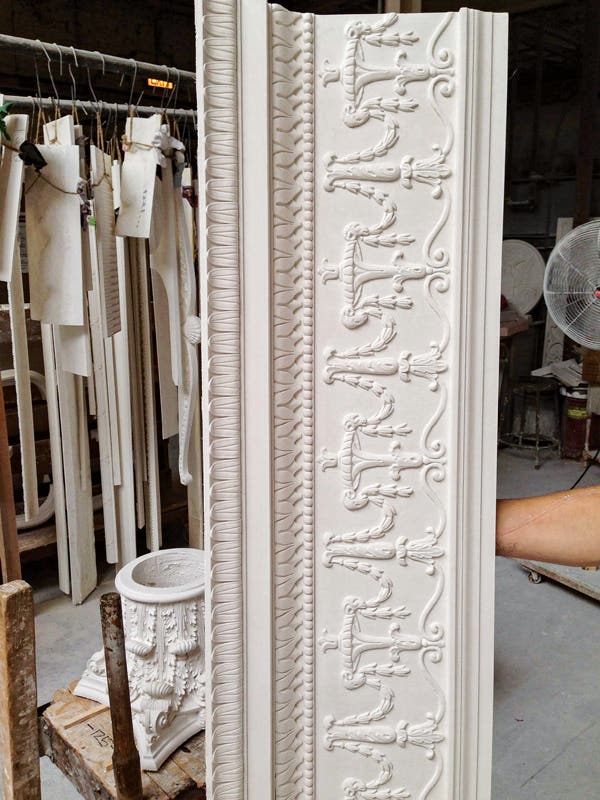


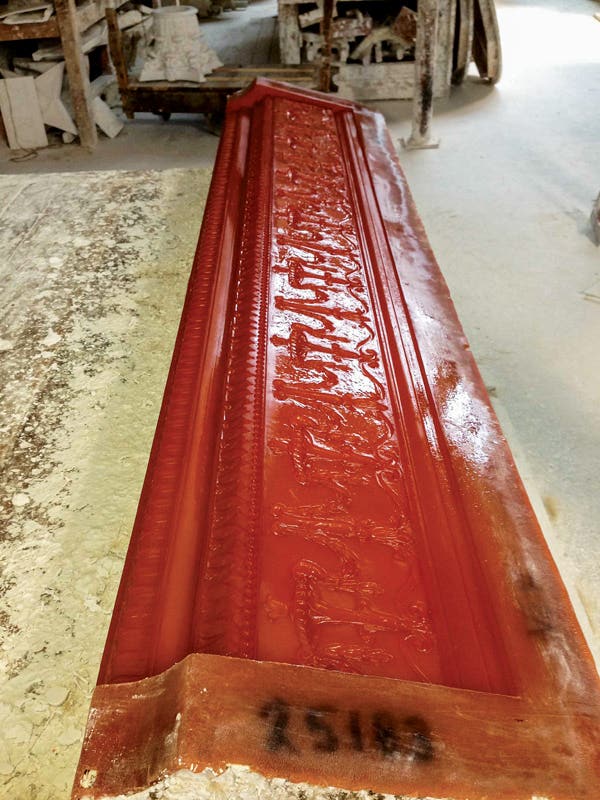
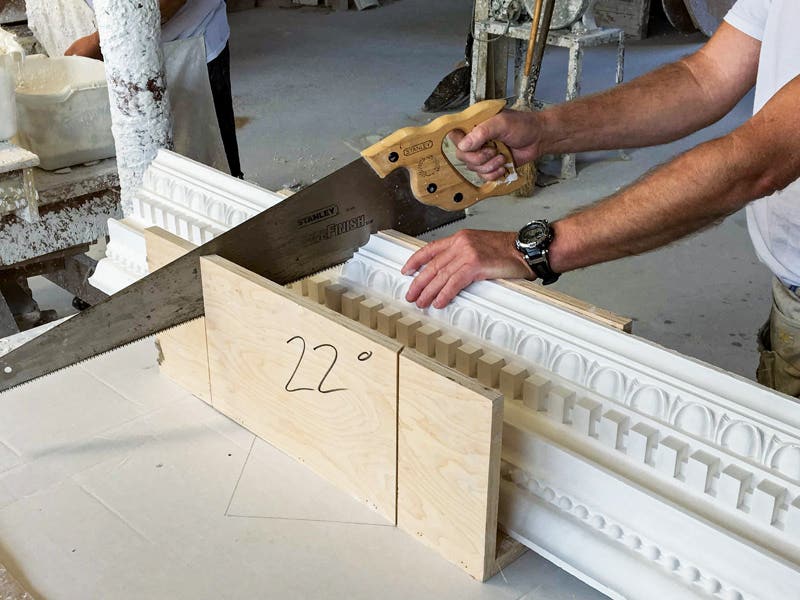
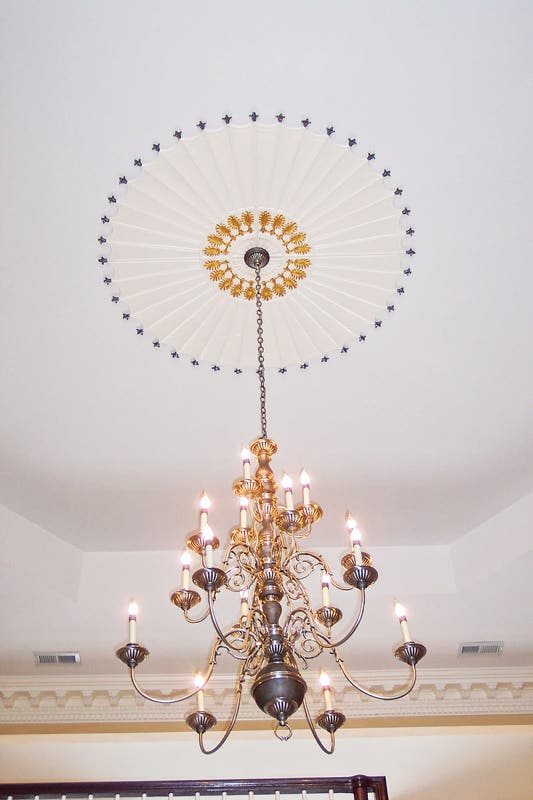
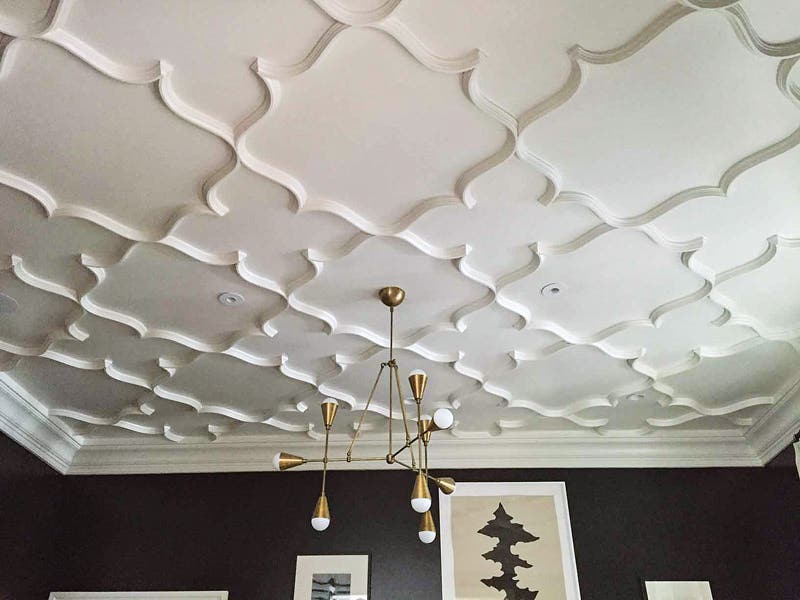
The same versatility can be seen as well when installing plaster ceiling medallions. Holes to accommodate light fixtures can be easily cut into the center of a plaster medallion with a hole cutter or hand tool. Screw holes can be drilled, counter sunk and then perfectly covered, again utilizing a small slurry of plaster.
The unique ability of plaster to self-bond is also a great benefit when ornaments or crowns are damaged on the job. For example, we sell many of our ceiling medallions for use in old, historic homes. It is not uncommon when these medallions (or crowns) are being screwed into the ceiling that the installer will hear a cracking sound. He then anxiously discovers that the ceiling, not surprisingly, is not flat and the ornament has cracked. This brings up one of the myths about plaster – that it is fragile and hard to install. We will address this myth in a moment but to complete this section, the installer need not worry. Applying a slurry of plaster will result in the crack literally disappearing.
Myth – Plaster is Fragile and Hard to Install
One of the most common myths about plaster ornament is that it is fragile and hard to install, when in reality plaster is quite durable and can be installed with standard carpentry tools. Ornamental plaster is comprised of essentially three materials: 1) molding plaster, 2) water and 3) some type of reinforcing material. This reinforcement serves in a sense to bind the plaster together.
The most common reinforcing materials are hemp (shredded ship rope, in lieu of the horse hair used in the old days!), or fiberglass, either sprayed or in mesh form. During manufacturing, the plaster molds are first partially filled with plaster, followed by the introduction of the reinforcing material. The final step involves applying a final layer of plaster over the reinforcement, essentially encasing this material within the plaster.
The reinforcement serves two purposes: 1) Gives the plaster strength, allowing the use of standard carpentry anchors (screws, toggle bolts etc.) in “hanging” the ornament and, 2) Allows for the use of less plaster, resulting in lighter cast weight.
Additionally, there are a wide range of chip-resistant Plaster of Paris products, such as Tuf-Cal and Hydocal, that allow casting of interior ornamental designs where traditional Plaster of Paris would not be recommended. Consult with your plaster caster to determine the best product for your use.
Myth – Plaster is Heavy
A second common myth is that plaster is heavy. While plaster is clearly heavier than a resin/foam product, a significant percentage of the initial weight in plaster after casting is in the water that is used in mixing up the plaster in preparation for casting. During curing (drying) much of this water and weight literally evaporates!
Additionally, the use of the above discussed reinforcing materials allows for using significantly less plaster during casting. Use of these reinforcements combined with the technique of hollowing out the backside of plaster ornaments results in surprisingly light ornaments. Visitors to our factory are regularly amazed at how light our plaster ornaments are vs. their expectations.
Green Material
Plaster ornamentation is comprised of naturally mined organic gypsum, water and fiber reinforcement. On the other hand, urethane and resin ornamentation is made up of a rather complex blend of chemicals that carry OSHA SDS warnings of health and environmental hazards relative to the handling and disposal of such materials.
Decorators Supply also uses organic sisal hemp fiber which is essentially recycled ship rope, making it very environmentally friendly vs. other options. Even those plaster companies utilizing fiberglass binders ultimately supply a finished product which is much more environmentally friendly than polyurethane products.
Fire Ratings/Toxicity
In addition to being eco-friendly, plaster will not burn and, of course, does not emit toxic fumes of any sort when exposed to fire. The same cannot be said for polyurethane, resin and fiberglass products.
Painting and Finishing
The porous nature of plaster makes it very versatile in terms of accepting a variety of paint finishes. Polyurethane materials, on the other hand are not absorbent. Polyurethane materials are typically supplied with a primer coat to help insure that the finish coat adheres properly. With plaster, the end user can apply essentially any type of primer coat to seal the product. Once the primer has been applied to the plaster, any type of final finish coat can then be applied.
In summary, plaster ornaments offer a great alternative to modern-day polyurethane materials. From a manufacturing and installation perspective, plaster provides a level of crispness and detail unmatched by these other materials, and it can be installed utilizing standard carpentry tools and techniques. Combine these superior features with its eco-friendly nature and we think that even Aristotle would agree that a material used so successfully during his era should receive serious consideration during our era!



